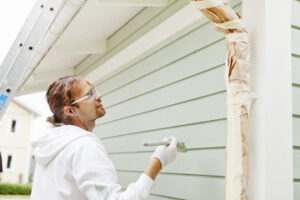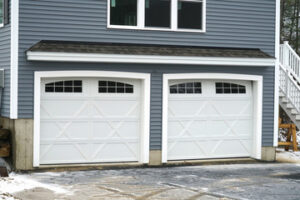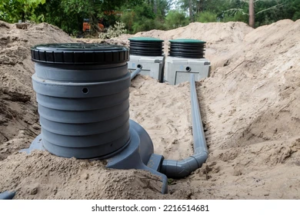Pest control is the management of insects, rodents and other organisms that damage property or threaten human health. It includes a range of techniques, from suppression to eradication.
Look for companies that are licensed and members of professional associations. They will be able to provide you with copies of pesticide labels and application rates. Read on Pest Control Augusta Maine to learn more.

Insects
Insects are the dominant animals in all terrestrial environments, and they have a profound effect on our world by chewing crops, sucking out plant juices or spreading disease. They ruin natural fibers, eat away at wood building materials, destroy grain and spoil stored food, and they also cause direct damage to people and domestic animals by transmitting diseases transmitted through bites or stings.
However, insects can also be beneficial to humans and nature. Only a small percentage of insect species are considered pests, and even these pests can have positive impacts when their populations are controlled. Beneficial insects include predators that feed on pests and parasitic insects that lay their eggs inside host pests, killing them. They can help reduce the amount of chemicals needed for pest control by keeping predator and parasitic population levels in balance. They can also increase crop yields by feeding on weeds or dispersing seeds. Examples of beneficial insects include ground beetles, which aerate soil, reduce methane emissions, and prevent crop loss from weeds; and dung beetles, which are effective at reducing methane gas outputs on dairy farms.
There are many methods to control insect populations, including cultural, physical, chemical and biological. Cultural control involves changing farming or gardening practices to make the environment less attractive to pests. This can include the use of mulch, soil amendments and organic matter to improve aeration, and the inclusion of plants known to attract beneficial insects. Other strategies include the use of traps, baits and barriers to keep pests away from crops, and the use of cover crops to prevent pests from escaping to edible plants.
Chemical control involves the use of substances that kill or inhibit insect growth and reproduction, including fungicides, herbicides, synthetic products and naturally occurring products. The most commonly used product is the bacterium Bacillus thuringiensis, which is sold in commercial formulations as Bt spray. This product kills caterpillars, gypsy moth larvae and Colorado or elm leaf beetle larvae by releasing a protein that paralyzes them.
Another method is sterile insect technology, or SIT. SIT produces large numbers of sterile, or knockdown, insects to be released as pest controls. This method has been used globally to control insects that affect human health, such as tsetse flies and mosquitoes, as well as crops and trade, such as hemlock woolly adelgids and fruit flies.
Rodents
Rodents are small mammals that have adapted to living in close association with humans. They are omnivorous and will feed on almost anything they can find; seeds, fruits, grain-based foods, meats and garbage are all fair game for rodents. Rodents also play a key ecological role by spreading seeds and spores.
Rodents have sharp front teeth that constantly grow and are used to gnaw and chew food, excavate burrows, defend themselves and to mark territory. Their urine and droppings can contaminate food, causing serious health risks to people. Rodents can also spread diseases and carry parasites that can cause illness in people and pets.
They gain access to your home by using their potent sense of smell and then gnawing their way into containers, bags, boxes and cabinets in search of food. Once inside, they may cause damage by tearing or chewing through wires, insulation and weather-proofing materials. They can also dislodge and contaminate stored food, posing a health risk to your family.
Cluttered spaces make it easier for rodents to hide and find shelter and food. They can also hide under or behind debris and limbs of trees and buildings, in planters, and in the crevices of basements, garages, and attics. Rodents can even climb inside drainage and sewer systems to enter your home.
When rodents chew through electrical wiring, they pose a fire threat. They can create shorts and sparks that can start fires, damaging your home or business. They can also cut through the insulation in your walls, and cause sags in ceilings and floors.
Regularly inspect cluttered and hidden areas for rodent signs. Look for droppings that are pointed at one end and contain hair. Droppings are a good indicator that a rodent infestation has been active in an area. Clean up droppings promptly and regularly, using district-approved disinfectants.
Use nontoxic monitoring bait blocks placed in tamper-resistant stations around your property and in nonvisible, inaccessible areas to trap and monitor rodent populations. Place additional traps in vulnerable areas where you suspect rodents are present. Use glue boards, snap traps, and shock or live traps in garages, custodial closets, laundry rooms, vending areas, sill plates and crawlspaces. Seal gaps larger than a quarter inch.
Bed Bugs
Bed bugs are difficult to treat because they’re resistant to many regulated chemicals and spread quickly from person to person. These pests are a challenge for businesses and multi-family housing because people move in and out of the building each day, making it easy for them to pass the insects from one space to another. Bed bug treatment involves removing and cleaning infested bedding, mattresses and furniture. A professional will use a heat chamber or specialized equipment to kill the insects and their eggs.
Homeowners can reduce the risk of a bed bug infestation by keeping rooms clean and clutter free. Launder bedspreads and clothing often, vacuum floors frequently, and seal cracks around baseboards and light sockets. Using a lint roller to remove crumbs from upholstered furniture is also helpful. During travel, check hotel rooms for signs of an infestation and don’t place luggage on the floor.
If you suspect you have a bed bug problem, contact a pest control specialist right away. The best way to identify a bed bug is to look for bite marks on your face, neck, arms or hands after sleeping. You can also smell a musty, sour odor in rooms with heavy bed bug infestations.
Infestations are common in hotels, movie theaters, airports and other areas where hundreds of people stay at the same time. You may also pick up the insects when visiting friends, and they can hitch rides on your clothing or a furry pet.
Infestations are also common in apartment buildings and other multi-unit housing. Apartments are smaller and more cluttered, which makes it harder to find and treat the problem. In addition, tenants may not report problems, resulting in unknown infested units becoming sources of infestations throughout the complex. A professional will conduct frequent, building-wide inspections to prevent the spread of a bed bug infestation. These inspections can include visual evaluation, a thorough physical examination and the use of special odor detection equipment. The pest control technician will also recommend non-residue methods of treatment. These may include steaming and cleaning upholstered furniture, and interceptors placed under bed and sofa legs to trap the pests as they attempt to escape.
Other Pests
A pest is any organism that adversely affects people’s use of the environment and/or interferes with human life. Any animal that competes with humans for food and resources or damages living or working spaces is considered a pest, as are any plant or pathogen that poses a threat to human health. Serious, even fatal diseases can be spread by pests such as aphids that wreak havoc on cultivated plants or mosquitoes that transmit malaria and other serious diseases. Pest control methods aim to eliminate or reduce the population of pests to an acceptable level while causing as little harm to non-target organisms as possible.
Several factors affect the success of pest control, including the climate, the presence or absence of natural enemies, the availability of food and water sources, the ability to find shelter and the barriers that prevent pests from entering an area. Control methods include prevention – keeping pests from getting into an area, suppression – reducing the number of pests to an acceptable level and eradication – eliminating an entire pest population.
Correctly identifying the pest is critical to choosing an appropriate control strategy. This can be done by noting the pest’s characteristics and comparing them to images in a pest identification guide. Terminix’s Pest Library can help you identify common household pests such as cockroaches, termites, bed bugs and rodents.
Other pests, such as head lice and scabies, can be more easily treated with over-the-counter or prescription medicines. If left untreated, these parasitic pests can spread from one person to another through close contact. School-age children are especially prone to developing head lice and must be carefully combed with a special nit comb after each wash.
Preventive pest management includes regularly inspecting and treating for pests in areas around the house, such as the foundation, windows and doors, and preventing moisture problems in crawl spaces and basements. Regular cleaning of kitchens and keeping food in tightly-sealed containers can also deter many pests. For pests that invade indoors, such as roaches and bed bugs, using insecticides to kill them may be necessary. However, these products should always be used according to their label instructions and in a well-ventilated area.








